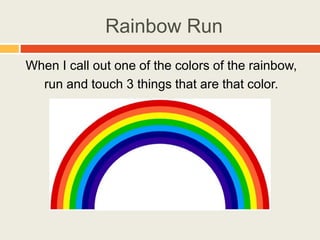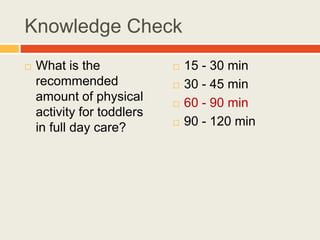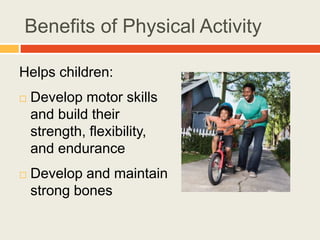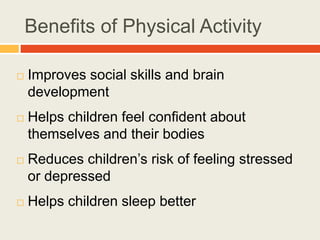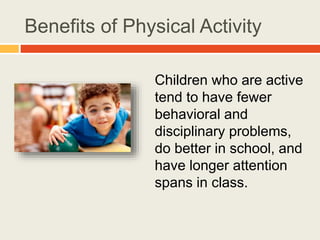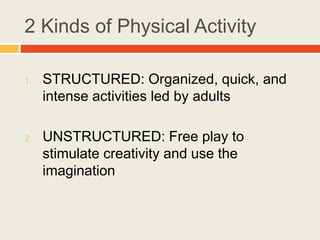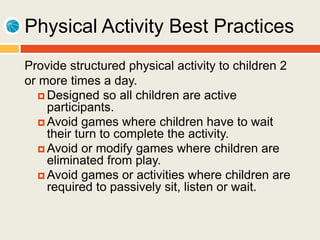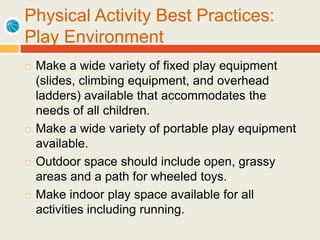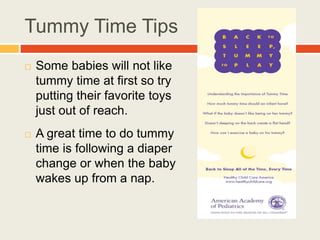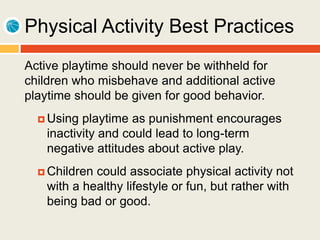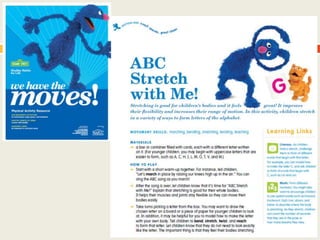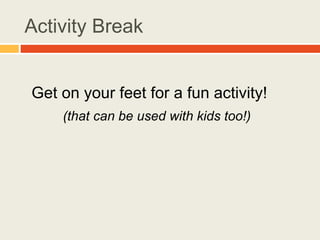This document provides information and strategies for increasing physical activity among children. It recommends that toddlers and preschoolers receive 60-90 minutes of active playtime per day, including both indoor and outdoor activities. Physical activity benefits children's health, development, learning, and behavior. The document offers ideas for structured and unstructured play, using physical activity across the curriculum, and keeping infants active through tummy time. It provides resources and tips for implementing best practices for physical activity with kids.


